
A computational framework of human voice production: from singing voice to pathological voice Human voice production is a complex process and requires fine coordination of different systems. Voice production starts with the airflow from the lungs, which excites the vocal folds into vibration and produces the sound source. The muscles around the larynx control...
Read More A computational framework of human voice production: from singing voice to pathological voice
Read More A computational framework of human voice production: from singing voice to pathological voice
ECR Project Categories:
Computational ScienceData Science 
IDRE Fellow: Dr. Hesam Soleimani Faculty Mentor: Dr. Ertugrul Taciroglu Department: Civil and Environmental Engineering _________________________________ Urban infrastructure is governed by specific rules, ranging from simpler systems, such as residential buildings, to more critical structures like power, energy, and healthcare facilities. Structural Health Monitoring (SHM) provides a framework for monitoring these systems to ensure service...
Read More Transfer Learning Across Heterogeneous Structures for Large-Scale Structural Health Monitoring Purposes
Read More Transfer Learning Across Heterogeneous Structures for Large-Scale Structural Health Monitoring Purposes
ECR Project Categories:
Data Science 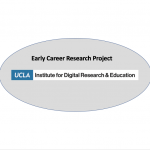
Author: Robert Fofrich Navarro, UC Postdoctoral Fellow and IDRE Fellow – Institute of the Environment and Sustainability Many climate pathways aiming to limit mean global temperatures to 2°C rely on biogenic negative emission solutions to achieve large and rapid reductions in atmospheric CO2 over the next few decades. However, land-based climate mitigation measures require significant...
Read More Ecological and Climate Mitigation Tradeoffs from Cultivating Energy Crops in Tropical Regions
Read More Ecological and Climate Mitigation Tradeoffs from Cultivating Energy Crops in Tropical Regions
ECR Project Categories:
Computational ScienceData Science 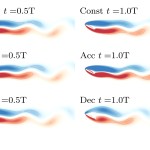
Author: Alec Linot, Postdoctoral Scholar and IDRE Fellow – Department of Mechanical and Aerospace Engineering In industrial processes involving fluids, vast amounts of energy are lost as dissipation due to turbulent drag. The energy production required to sustain these processes accounts for 5% of all manmade carbon dioxide (Jimenez 2013). Consequently, even small improvements toward...
Read More Optimal perturbations in high-dimensional unsteady aerodynamic flows
Read More Optimal perturbations in high-dimensional unsteady aerodynamic flows
ECR Project Categories:
Computational Science 
Author: Seyoon Ko, Postdoctoral Scholar and IDRE Fellow, Public Health – Biostatistics This project is to develop of a method for identifying ancestry-informative markers and improving the widely-appreciated ADMIXTURE software using a modern clustering and feature ranking method for scalable admixture proportion estimation. Recently, the scale of data in the field of genetics has quickly...
Read More Unsupervised Discovery of Ancestry Informative Markers and Genetic Admixture Proportions in Biobank-Scale Data Sets
Read More Unsupervised Discovery of Ancestry Informative Markers and Genetic Admixture Proportions in Biobank-Scale Data Sets
ECR Project Categories:
Computational ScienceData Science 
IDRE Fellow: Dr. Olivia Sanderfoot (Postdoctoral Scholar) Faculty Mentor: Dr. Morgan Tingley (Associate Professor) Department: Ecology & Evolutionary Biology Project Description: Climate change coupled with a legacy of fire suppression is driving an increase in the frequency, intensity, and severity of wildfires1,2, prompting the United Nations to declare a worldwide “wildfire crisis3.” The record-breaking 2020 wildfire season in the...
Read More Integrating long-term ecological monitoring data and high-resolution atmospheric models to investigate avian responses to wildfire smoke
Read More Integrating long-term ecological monitoring data and high-resolution atmospheric models to investigate avian responses to wildfire smoke
ECR Project Categories:
Computational ScienceData Science 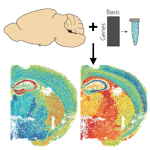
IDRE Fellow: Dr. Fangming Xie Faculty Mentor: Dr. Roy Wollman Key members of the project: Zach Hemminger, Gaby Tam, Thomas Underwood Department: Chemistry & Biochemistry Project Description: Biology is undergoing a revolution of information explosion. Thanks to decades of technological development in genomics and imaging, biologists can now routinely measure the expression level of thousands...
Read More High-throughput survey of brain cell type diversity and organization using an in-situ and in-silico hybrid neural network classifier
Read More High-throughput survey of brain cell type diversity and organization using an in-situ and in-silico hybrid neural network classifier
ECR Project Categories:
Computational ScienceData Science 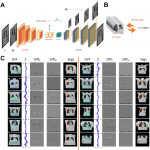
Several technological advances in radiotherapy have enabled the use of focused radiation to treat solid tumors within the thoracic cavity. Stereotactic Body Radiation Therapy (SBRT) offers a way to treat patients with high doses of radiation with just a few (three to five) treatments entirely non-invasively, providing excellent tumor control for both early stage non-small...
Read More Building a motion model for radiotherapy
Read More Building a motion model for radiotherapy
ECR Project Categories:
Data Science 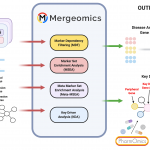
The Mergeomicsweb server allows for multi-omics data integration to derive biological pathways, networks, and key drivers important to disease pathogenesis. Multi-omics data types that can be integrated include full summary statistics of disease associations, such as from genome-, epigenome-, and transcriptome-wide association studies, and functional genomics data such as expression quantitative trait loci and gene...
Read More Mergeomics
Read More Mergeomics
ECR Project Categories:
Data Science 
We are working towards creating a joint experimental/theoretical/computational framework to explore the behavior of liquids which have programmable interactions. Inspired by liquid liquid phase separation as a mechanism of organization in biological systems, we are looking in depth at systems containing both chemical reactions (interconversion of species) and phase separation (weak multivalent interactions between species)....
Read More Simulations of Programmable Liquids
Read More Simulations of Programmable Liquids
ECR Project Categories:
Computational Science 
The quark transversity distribution is one of three leading-twist parton distribution functions describing the structure of the nucleon. The transversity distribution is particularly difficult to measure because it is a chiral-odd distribution, manifesting as an interference effect between multiple helicity amplitudes. It appears convolved with other chiral odd distributions/fragmentation functions in the cross section of...
Read More Sub-Nuclear Structure: Extracting the Quark Transversity Distributions and Collins Fragmentation Functions
Read More Sub-Nuclear Structure: Extracting the Quark Transversity Distributions and Collins Fragmentation Functions
ECR Project Categories:
Data Science 
As human civilization pours more greenhouse gases into the atmosphere thereby causing and exacerbating climate change, the ocean serves as a temporarily and partial buffer as it absorbs large quantities of the emitted greenhouse gases (e.g., CO2), removing them from the atmosphere. Around Antarctica one of the densest water masses in the ocean is formed...
Read More Remotely Sensing Overturning Circulation Variability in the Southern Ocean
Read More Remotely Sensing Overturning Circulation Variability in the Southern Ocean
ECR Project Categories:
Computational Science 
The properties of cementitious binders are controlled by their composition and structure at different scales. However, the complexity of their disordered, multi-scale structure makes it challenging to elucidate such linkages. In particular, due to a lack of physical models, predicting the strength development of concretes remains challenging. As an alternative route to physics-based models, machine...
Read More Prediction of Concrete’s Strength Enabled by Machine Learning Methods
Read More Prediction of Concrete’s Strength Enabled by Machine Learning Methods
ECR Project Categories:
Computational ScienceData Science 
Background: Computerized provider order entry (CPOE) systems have been shown to enhance the safety and efficiency of prescribing chemotherapy over the handwritten ordering process. However, many institutions lack the financial ability, technological capability, or operational flexibility to invest in and implement such a system. In particular, Olive View-UCLA Medical Center (OVMC), a Los Angeles County...
Read More ChemoPalRx: Development and implementation of a chemotherapy mobile provider order entry system in a safety net hospital
Read More ChemoPalRx: Development and implementation of a chemotherapy mobile provider order entry system in a safety net hospital
ECR Project Categories:
Data ScienceDigital Scholarship and Creative Activities 
Depending on their composition, hydrated gels can be homogeneous or phase-separated, which, in turn, can affect their dynamical and mechanical properties. However, the structural features that govern the propensity for a given gel to phase-separate remain unknown. Here, based on reactive molecular dynamics simulations (ReaxFF), we investigate the atomic structure of a series of calcium–alumino–silicate–hydrate...
Read More Topological Origin of Phase Separation in Hydrated Aluminosilicate Gels
Read More Topological Origin of Phase Separation in Hydrated Aluminosilicate Gels
ECR Project Categories:
Computational Science 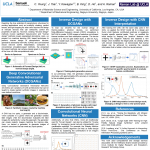
Recent studies in nanophotonic structures and metamaterials have showcased remarkable applications such as invisibility cloaks, perfect lenses, radiative cooling, and light trapping for solar cells. However, current design methodologies require computationally-intensive, time-consuming, and iterative processes to realize structurally-complex devices. For example, finite-element analysis (FEA) simulation and other “forward design” methods involve a series of trial-and-error...
Read More Machine Learning-based Inverse Design of Thermal Photonic Metasurfaces
Read More Machine Learning-based Inverse Design of Thermal Photonic Metasurfaces
ECR Project Categories:
Computational ScienceData Science 
One of the most fundamental pursuits in the field of space science is to understand the dynamical connections between the sun’s driving forces and the response of Earth’s space environment. Classical reasoning holds that the sun’s plasma outflow and magnetic field characteristics (known as the Solar Wind) propagate all the way to the earth and...
Read More Tracing the Flow of Information in the Coupled Sun-Earth Space System
Read More Tracing the Flow of Information in the Coupled Sun-Earth Space System
ECR Project Categories:
Computational ScienceData Science 
Genomic sequencing has allowed identification of omic features that predict drug sensitivity and their mechanisms of action. However, findings from these associative models have the potential to be more powerful with the availability of data from genome-wide, forward perturbation approaches in large panels of cancer cell lines. Using data generated by RNA interference (RNAi) and...
Read More Unravel Cancer Drug Specificity and Unknown Mechanism of Actions
Read More Unravel Cancer Drug Specificity and Unknown Mechanism of Actions
ECR Project Categories:
Data Science 
Wound healing is a systems-level program governed by complex inter and intracellular networks. After wounding, receptor activation causes intracellular signaling cascades inducing downstream transcriptional changes specific to the dose and identity of the ligand. Although these networks have been rigorously studied, establishing a direct mapping between signaling and gene expression is still an open question. I...
Read More Decoding NF-κB Dynamics Using A High-Throughput, Information-Based Approach
Read More Decoding NF-κB Dynamics Using A High-Throughput, Information-Based Approach
ECR Project Categories:
Computational ScienceData Science 
Accurately quantifying drug response is essential to designing effective anti-cancer agents. Though agents such as chemotherapies have known effects on the cell cycle, these have not been comprehensively characterized or analyzed using a unified quantitative model of pharmacologic response. Here, we used a breast cancer cell line with a stably expressed fluorescent translocation cell cycle...
Read More Mathematical modeling of cell cycle phase-specific drug response in human breast cancer cell lines
Read More Mathematical modeling of cell cycle phase-specific drug response in human breast cancer cell lines
ECR Project Categories:
Computational ScienceData Science 
The quasi-static particle-in-cell (PIC) algorithm is extensively utilized to model short-pulse or high-energy charged particle interacting with plasma. Compared to the very computationally intensive full three-dimensional (3D) explicit PIC code, the quasi-static PIC codes are able to speed up the simulations by orders of magnitude, which allows for modeling the physical problems requiring massive computing...
Read More Highly efficient quasi-static particle-in-cell algorithm using azimuthal Fourier decomposition
Read More Highly efficient quasi-static particle-in-cell algorithm using azimuthal Fourier decomposition
ECR Project Categories:
Computational Science 
Classical molecular dynamics simulations are widely used to facilitate the modeling and design of silicate glasses. To this end, several empirical have been developed—each of them focusing on distinct features of silicate glasses (e.g., structure, mechanical properties, etc.). Available forcefields relying on fixed partial charges can be divided into “soft” and “hard” depending on the...
Read More Machine-learning-based Molecular Dynamics Simulations of Silica: Soft vs. Hard Forcefields
Read More Machine-learning-based Molecular Dynamics Simulations of Silica: Soft vs. Hard Forcefields
ECR Project Categories:
Computational Science 
Naturally occurring chorus emissions are a class of electromagnetic waves found in the space environments of the Earth and other magnetized planets. They play an essential role in accelerating high-energy electrons forming the hazardous radiation belt environment. Chorus typically occurs in two distinct frequency bands separated by a gap. The origin of this two-band structure...
Read More NASA’s spacecraft data reveals the origin of two-band chorus in outer space
Read More NASA’s spacecraft data reveals the origin of two-band chorus in outer space
ECR Project Categories:
Computational Science 
Receptor tyrosine kinase (RTK)-targeted therapies are invariably limited by drug resistance. A major mechanism of acquired resistance involves “bypass” switching to alternative pathways driven by non-targeted RTKs that reactivate proliferation. These pathways are often centered around Erk/Akt signaling; however, a more fundamental understanding of network-level bypass resistance is required to better inform the design of...
Read More Mapping global signaling state during switched RTK activation to identify the essential features of bypass resistance in cancer
Read More Mapping global signaling state during switched RTK activation to identify the essential features of bypass resistance in cancer
ECR Project Categories:
Computational ScienceData Science 
The Indus River Basin (IRB) is a large river basin supporting 237 million people, but a limited gauge network means that there are relatively few measurements upon which to base water management decisions. With new globally available data products like the Multi-Error-Removed Improved Terrain (MERIT) DEM and the FAO’s Harmonized World Soil Database (HWSD) and...
Read More Calibrating a hydrological model in the Indus River Basin
Read More Calibrating a hydrological model in the Indus River Basin
ECR Project Categories:
Computational Science 
Glasses are often exposed to impact loading during their service life, which may lead to their failure. While in situ experimental studies on impact-induced damage are challenging due to the short timescales involved, continuum-based computational studies are complicated by the discontinuity in the displacement field arising from the propagation of cracks. We’ve used Peridynamic simulations to investigate...
Read More Glass Fracture upon Ballistic Impact: New Insights from Peridynamics Simulations
Read More Glass Fracture upon Ballistic Impact: New Insights from Peridynamics Simulations
ECR Project Categories:
Computational Science 
A diverse amalgam of variably-structured data embodies our expanding knowledge of biological phenomena, including human health and disease. The PubMed biomedical citation database adds more than one million entries to its collection of 30 million literature items each year. These documents cover both experimental observations and clinical reports; more than two million of the latter...
Read More Resources for comprehensive information extraction and data integration in biomedicine
Read More Resources for comprehensive information extraction and data integration in biomedicine
ECR Project Categories:
Data Science 
Developing novel glasses with new, improved properties and functionalities is crucial to address major challenges in energy, communications and infrastructure. A data-driven machine learning (ML) technique is a potential method to accelerate the discovery in novel glass; however, there are some intrinsic limitations embedded in such ML models. For example, the use of traditional ML...
Read More Topology-informed machine learning for the prediction of glass stiffness
Read More Topology-informed machine learning for the prediction of glass stiffness
ECR Project Categories:
Computational Science 
There is interest in generating moderately relativistic electrons (10–100 MeV) to produce X-rays for the probing of hot, dense material. One way to produce such hot electrons involves using a high-intensity picosecond laser, which generates relativistic plasma waves and goes unstable due to self-modulational and Raman scattering instabilities.[i] In this configuration, energetic electrons are generated...
Read More Simulations of the direct laser acceleration of electrons including the use of a customized field solver and quasi-3D geometry*
Read More Simulations of the direct laser acceleration of electrons including the use of a customized field solver and quasi-3D geometry*
ECR Project Categories:
Computational Science 
In 1946, Professor David Boder from the Illinois Institute of Technology traveled to Europe to interview Holocaust survivors in displaced persons’ camps in France, Germany, Switzerland, and Italy. Using a wire recorder, he collected over 100 interviews in 9 different languages, asking survivors about events which were still relatively unknown in the United States. The...
Read More Analysis of Language Use and Narrative Structures in Genocide Interviews
via Digital Humanities Approaches
Read More Analysis of Language Use and Narrative Structures in Genocide Interviews
via Digital Humanities Approaches
ECR Project Categories:
Digital Scholarship and Creative Activities 
In some modern geostatistical problems, statisticians need to analyze multiple correlated responses with the number of observations reaches a million. This big data problem has promoted a rich literature on scalable methodologies for analyzing multivariate large spatial datasets. The scalable spatial process models in the Bayesian paradigm have been found especially attractive due to their...
Read More Bayesian linear model of coregionalization (BLMC) for large scale datasets with accelerated posterior sampling algorithm
Read More Bayesian linear model of coregionalization (BLMC) for large scale datasets with accelerated posterior sampling algorithm
ECR Project Categories:
Data Science 
We introduce a biomimetic simulation framework for human perceptionand sensorimotor control. Our framework features a biomechanically simulated musculoskeletal human model actuated by numerous skeletal muscles, with two human-like eyes whose retinas contain spatially nonuniform distributions of photoreceptors. Its prototype sensorimotor system comprises a set of 20 automatically-trained deep neural networks (DNNs), half of which comprise...
Read More Learning Biomimetic Perception for Human Sensorimotor Control
Read More Learning Biomimetic Perception for Human Sensorimotor Control
ECR Project Categories:
Data Science 
Despite recent advances related to smartphone cover screens, glass still breaks. Brittleness remains the main limitation of glass, as the risk of fracture often raises safety and reliability concerns. Throughout history, glass has been associated with danger and, in fact, it has been estimated that 15-to-30% of injuries are related to broken glass. Here, we...
Read More Overcoming the Brittleness of Glass by Nanoscale Phase Separation
Read More Overcoming the Brittleness of Glass by Nanoscale Phase Separation
ECR Project Categories:
Computational Science 
Polycrystalline materials, a class which includes most metals and ceramics, are composed of a large aggregate of single crystal pieces called grains. The Kobayashi-Warren-Carter (KWC) model is a fundamental model in material science for simulating grain microstructure evolution. The KWC energy depends on two variables, which records the orientation of the grains, and ...
Read More A thresholding scheme for the KWC model
Read More A thresholding scheme for the KWC model
ECR Project Categories:
Computational Science 
Atomistic simulations can offer direct access to the atomic structure of glasses, which is otherwise invisible from conventional experiments. However, molecular dynamics (MD) simulations of glasses based on the melt-quenching technique remain plagued by the use of high cooling rates, while reverse Monte Carlo (RMC) modeling can yield non-unique solutions. Here, we adopt the force-enhanced...
Read More New Insights into the Structure of Sodium Silicate Glasses by Force-Enhanced Atomic Refinement
Read More New Insights into the Structure of Sodium Silicate Glasses by Force-Enhanced Atomic Refinement
ECR Project Categories:
Computational Science 
Duchenne muscular dystrophy (DMD) is a lethal pediatric disease caused by mutations in the enormous DMD gene. The DMD gene contains 79 exons and spans 2 megabases – one of the largest in the human genome. Multiple messenger RNA isoforms which are “working copies” of the gene, have been described but recent data suggests an...
Read More Leveraging existing RNA-seq data sets to identify alternative isoforms of neuromuscular disease transcripts and aid the diagnosis of muscular dystrophy
Read More Leveraging existing RNA-seq data sets to identify alternative isoforms of neuromuscular disease transcripts and aid the diagnosis of muscular dystrophy
ECR Project Categories:
Computational ScienceData Science 
Large-scale simulations of many of today’s interesting problems in plasma physics suffer from severe load balance issues, including plasma-based acceleration and magnetic reconnection with pair production due to quantum-electrodynamic effects. Contemporary particle-in-cell codes must be designed to efficiently utilize a new fleet of exascale computing architectures. We discuss the implementation of dynamic load balancing by...
Read More Dynamic Load Balancing with Enhanced OpenMP Parallelism in OSIRIS
Read More Dynamic Load Balancing with Enhanced OpenMP Parallelism in OSIRIS
ECR Project Categories:
Computational Science 
Deep learning, a branch of machine learning, can serve as a powerful toolkit for studies in ecology and evolutionary biology. In the era of big data, gaining more insight into complex patterns within a dataset can be transformative for conducting comparative analyses. The field of comparative phylogenetics has become increasingly interested in exploiting massive datasets...
Read More High-Throughput Phenoscaping Using Deep Learning for Accurate Automatic Instance Segmentation of Fish Images
Read More High-Throughput Phenoscaping Using Deep Learning for Accurate Automatic Instance Segmentation of Fish Images
ECR Project Categories:
Computational ScienceData Science 
BACKGROUND: A specific aspect of the hypospadias phenotype that may contribute to long-term outcomes is the presence of ventral penile curvature and the adequacy of its surgical correction. The current gold standard to assess this angle is intraoperative goniometry of an erect penis. Beyond its potential technical limitations, an angle measured by goniometry cannot be...
Read More Measurement Accuracy of 3-Dimensional Modeling Technologies versus Standard Goniometry for Assessment of Angulation
Read More Measurement Accuracy of 3-Dimensional Modeling Technologies versus Standard Goniometry for Assessment of Angulation
ECR Project Categories:
Computational ScienceData Science 
Policy Iteration (PI) is a popular family of algorithms to compute an optimal policy for a given Markov Decision Problem (MDP). Starting from an arbitrary initial policy, PI repeatedly performs locally-improving switches until an optimal policy is found. The exact form of the switching rule gives rise to different variants of PI. Two decades ago,...
Read More Markov Decision Problem
Read More Markov Decision Problem
ECR Project Categories:
Computational Science 


